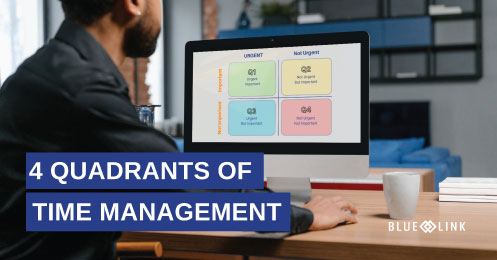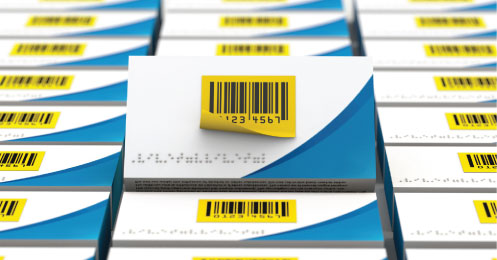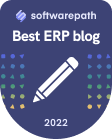If you want to start a pharmaceutical distribution business, you must first purchase a license to sell product. After you’ve acquired your licenses, you are then responsible for following specific guidelines in accordance with industry regulations around product traceability, supply chain management, and reporting. The licenses you acquire dictate what type (class) of product you can sell, and to what geographic location, and then the guidelines in place will vary depending on this information. In general, regulations are based on specific types of products such as over-the-counter drugs, prescription drugs, and controlled substances. Agencies such as the FDA are responsible for monitoring licenses and ensuring that each distribution company adheres to the proper regulations.
Acquiring your licenses is just one small step to starting your business. You will then have to set-up processes for managing orders, tracking inventory, sales, invoicing and more. This means that you will need some sort of software system to manage all of these processes and data – one that includes functionality to also help comply with the different regulations set forth by the FDA and as dictated in the DSCSA.
So, how does a company manage all these processes while ensuring that they are also complying with regulations? The best solution for managing these requirements is to implement pharmaceutical inventory and accounting management software as soon as possible. Pharmaceutical accounting and inventory software not only helps your business comply with regulations but also provides tools for managing all other aspects of the business, including accounting, financials, order entry and processing, customer relationship management, warehouse management, inventory, traceability and more. Given the nature of the industry, it is important that any system you implement is supported by a vendor who actively monitors changes to regulations to add new functionality as needed.
Searching for a vendor
Budget
As a start-up business, finding the funds and resources necessary to implement software can be difficult, but the idea is that the right solution will help your business grow and reduce costs in the long term. It is important to compare any costs associated with the software against the costs of manual processes – in terms of the effort it takes to comply with regulatory requirements and the potential consequences in the event of human error.
Timing
Once you have applied for your licenses it can take a while before they are approved. However, this waiting period is the best time to start searching for appropriate software, so that you have a solution in place as soon as possible after you receive your licenses. Ideally, you want a proper solution in place before you purchase product and receive items into your warehouse. One of the biggest mistakes companies make purchasing pharmaceutical accounting and inventory software is underestimating the time it takes to evaluate, select, and then implement the software. Even as a start-up business, this process can take anywhere from 3-6 months which is why it is important to start extensive research and engage in discussions with vendors while waiting on your licenses to come through.
Minimum Regulatory Requirements
As soon as you receive inventory into your warehouse, regulations come into play. Once again, these regulations will depend on the licenses you have, but requirements from a functionality standpoint center mostly around product pedigree, traceability, reporting and customer license management. At a minimum, you want functionality to track lot numbers and expiry dates of products, identify vendors along the supply chain to track the specific product back to the manufacturer, automatically generate and send reports to specific governing agencies and ensure that your customers have a valid license to purchase the product being sold.
Keep in mind that it is hard to coordinate the timing of receiving your licenses with implementing software and purchasing inventory. This is especially true given that software implementations do not happen overnight. However, even if you have to manually manage processes in the beginning, the sooner you get a new system in place the better.
Functionality
When pharmaceutical distributors search for new software, there are a few common features that are at the top of their checklist. These features include inventory management, lot tracking/traceability, EDI integration and landed cost functionality.
These features all work together to automate processes and increase transparency to help achieve various pharmaceutical industry compliance requirements set by the FDA/ISO. However, it's time for pharmaceutical distributors to expect more from a software solution. A good pharmaceutical distribution software will have additional, market expanding and process automating functionality to not only make day-to-day tasks easier but to also play a critical part in growing the company's bottom line. A good pharmaceutical distribution software will be able to grow with the company and be a long-term fixture in the business.
When you are ready to start the search, consider two areas of functionality, pharmaceutical specific functionality and distribution functionality. You will need a set of functions to help you be compliant with the law and you will need a set of functions that will help you run your business efficiently – the goal is to find one software vendor that can satisfy both needs. Look for a fully integrated ERP system to house all of your company information in one central database, and ensure compliance to the many regulations that affect you as a drug distributor.
Pharmaceutical Functionality
The pharmaceutical industry continues to move towards an interoperable future. Interoperability is the electronic sharing of files and as the industry works to formalize the process, Blue Link works to ensure the software we provide offers the functionality needed to distributors in order to be compliant with the DSCSA.
- Lot Tracking
- Electronic Serialized File Management
- Saleable Returns – Verification Router Service
- Short-dated Drug Management
- Compliance Reporting (T3 Management)
- Controlled substance Ordering (CSOS)
- DEA & State License Expiry Management
- Customer SKU Classification
- Landed Cost Tracking
- Revision Control
- Special Orders / Drop Shipping
(1) Lot Tracking
Lot tracking, or batch tracking, allows for product traceability to keep track of which customers received specific groups (or shipments) of items and when they were received. The supplier and date these items were purchased are also tracked, allowing managers to monitor an individual group of products (or shipment) from the supplier to their own warehouse and ultimately to the customer. Lot tracking is especially important if any of the products you distribute are recalled – associating a specific lot number to products makes it much easier to find and recall specific items.
Despite the importance of lot traceability for the industry, many businesses are still performing these processes manually – often on spreadsheets. This is a huge cause for concern, of course; not only because it can be an arduous process but also because very costly errors can be made.
Watch out for the varying degrees of lot tracking offered by different ERP software vendors. As they are not all created equal, be sure to make an apples-to-apples comparison. The optimal lot tracking solution should include:
- Internal and external lot number tracking
- The ability to pre-assign lot numbers based on expiry dates
- Proactive management of, and alerts for, expiry dates
- Auto-generate lot numbers (optionally)
- Printing of lot (or batch) information on packing slips, invoices etc.
(2) Electronic Serialized File Management
Blue Link's Serialized File Management
The focal point of discussion in recent years has been the DSCSA. Since the regulation's inception, Blue Link has diligently strived to ensure that our system offers a comprehensive end-to-end solution. We collaborate with 3rd party applications to parse electronic files, specifically EPCIS files, as per industry agreements. You can watch the process in the video provided below.
(3) Saleable Returns Verification
In the pharmaceutical sector, ensuring thorough verification of returned products is crucial. With VRS functionality, this presents an opportunity for smaller distributors who typically view returns as costly. By efficiently verifying products, you can expedite their return to the market for resale sooner than ever before.
(4) Short-Dated Drug Management
We have many resources about the importance of lot management but one interesting aspect to the pharmaceutical industry is the use of short-dated lots. Implementing a system that enables you to ascertain the days to expiry and facilitates management through notifications could prove beneficial.
(5) Compliance Reporting
A key obligation for a pharmaceutical trading partner is generating reports like T3's and ARCOS Reporting. While reporting is crucial for all businesses, regulatory reporting is legally mandated and cannot be overlooked. The capability to generate these reports also creates business opportunities. For the sale of schedule II drugs, submission of the ARCOS report by the distributor is mandatory.
(6) Controlled Substance Order System [CSOS]
CSOS allows distributors, pharmacies and manufacturers to transmit Schedule II (CII) orders electronically. This DEA approved legal process is based on regulations that allow CII items to be ordered electronically, assuming certain criteria have been met. CSOS is built into Blue Link’s B2B Online Order Portal.
Benefits include:
- Fast and easy data transfer between ERP and CSOS
- Less expensive than having two separate systems to manage
- Less time consuming as there is no need to switch back and forth between multiple applications
- One vendor to handle all your pharmaceutical software and support needs such as set-up, training and implementation
(7) DEA & State License Expiry Management
Search for a software solution that can identify within the system the type of license, state, license number, expiry date, and allowable drug schedule for each customer. This information should be easily accessible, allowing users to generate reports about licenses that are approaching expiry.
(8) Customer SKU Classification
This important feature gives you as a distributor the ability to restrict type and quantity of controlled drugs that can be sold to specific customers. Users will be alerted when customers are about to exceed their quantity limits at the order level. In many instances, this is required by the DEA.
(9) Landed Cost Tracking
Medical and Pharmaceutical businesses that import product need a landed cost tracking system to accurately cost inventory and provide meaningful gross margin data. This is particularly true of generic drugs or medical devices manufactured outside the country. Factors such as duty, brokerage and freight can have a profound impact on inventory costs. In order to ensure you are making the right purchasing and pricing decisions, make sure your software system handles landed costs appropriately.
- Define expected landed costs on purchase orders, and factor these into inventory costs – for accurate product costing
- Ability to specify default landed cost factors by product
- Ability to apply each landed cost factor to each line on a purchase order using one of several pro-rated methods – including a manual override for unusual situations
- Ability to reassign landed cost components to different vendors after receipt of purchase orders – if you expected the freight cost to be Carrier A, but the invoice arrives from Carrier B, you need to be able to account for it appropriately
- On-screen lookups and drill down to landed cost details – making it easy to see how the landed cost reconciles back to the supplier cost
(10) Revision Control
Internal lot numbers (or other methods) may be used as a means of keeping track of product revisions. For example, you may have a product that has received blanket FDA approval under one product code (SKU), but you carry several different versions (minor revisions). Splitting these into separate SKUs is a non-starter, but you still need a method of differentiating the revisions. This is ideally tracked at the lot / batch level.
(11) Special Orders / Drop Shipping
Medical products can be complicated and made-to-order, resulting in special orders. Ensure your software can accommodate these special orders and manage straight-forward drop shipping.
Distribution Functionality
A complete end-to-end solution like Blue Link ERP offers additional functionality on top of pharmaceutical specific components that help to advance all parts of your pharmaceutical distribution business.
- Robust Accounting
- Secure Online Order Portal
- Contact Management
- Electronic Document Management
(1) Robust Accounting
Aside from the lengthy list of compliance and regulatory requirements, pharmaceutical distributors have the same needs as any other business owner. Accounting is the language of any business. All businesses need to have accurate and up-to-date financial information to make informed decisions. Blue Link's accounting functionality is tightly integrated with its inventory management, order entry and processing and warehouse management functionality for greater accuracy and visibility of finances.
Specific functionality includes:
- Accounts Receivable/Payable
- Bank Management
- General Ledger
- Advanced Landed Cost Tracking
- Multi-Company/Multi-Currency
- Financial Report Writer
- Advanced Accounting Features
(2) Secure B2B Order Portal
Blue Link provides a fully integrated B2B eCommerce Online Order Portal known as B2BOP, for use by both customers and sales reps. The online portal can be completely customized to include company graphics, colors, and information and is integrated in real-time with Blue Link’s back-end ERP. Customers are able to log-in to the site, browse inventory with customer-specific pricing, place orders online, track order status, print transaction reports (T3s) and more.
The great thing about the order portal being integrated with Blue Link is that all your online order information is stored in one central hub. You don't have to re-key information into the system or update the website every time a transaction is made. Sales Reps can also access up-to-date inventory information on multiple devices and enter orders for their customers from anywhere they have an internet connection.
(3) Contact Management
Like with any business, maintaining a good relationship with customers is key to improving retention...this is where having contact management tools come into play. Contact Management is a broad term that can refer to tracking of customer/vendor information and communication as well as tracking sales opportunities (leads and prospects). Some of the benefits of this type of functionality are that users are able to create user-defined steps and processes according to the business' workflow. Companies are able to manage Marketing lists, integrate with MS office including emailing via Outlook and more.
Pharmaceutical distribution sales teams are able to track leads and prospects through a comprehensive sales cycle to help ensure they don’t allow any leads to ‘slip through the cracks’. Having a centralized location of customer information such as meeting dates, archived emails, and other notes allow the sales team to maintain a strong relationship with potential clients. Information includes order history, shipping addresses, email communications etc.
This information can benefit other departments as well. For example, if your accounting department needs to know a billing address of a customer, or perhaps the sales and marketing team wants to call and check in on how things are going, all the information needed is easily accessible.
(4) Electronic Document Management
The integration between Blue Link and DocuWare - an electronic document management system - allows users to quickly store, index, search, display, download, retrieve, edit and integrate documents and create automated workflows to help your business operate in a paperless environment. Benefits include:
- Users can view pictures of documents that require specific programs to open. For example, DocuWare will store CAD files as an image so that users without the CAD program can still view an image of the document from their own computer or phone.
- Users can create workflows within DocuWare so that documents automatically get sent to the right employees based on document type.
- Workflows can be used in creating an approval process whereby multiple users interact with a document before it gets sent to Blue Link with the document automatically being sent to the appropriate person throughout each stage of the workflow.
- Workflows can be used to create automatic email responses and alerts based on document status.
- Users can “clip” and “staple” documents together so that they get stored as 1 file – such as multiple expense receipts.
- Intelligent indexing will learn how to index new and similar documents without manual help.
To fulfill the requirements of the medical and pharmaceutical industry, any software package under examination should have all of the above features. If it doesn’t, keep looking.
Remember, ERP software is highly customizable to suit your specific needs while maintaining your compliance with industry standards and regulatory requirements. If it’s time to grow your pharmaceutical wholesale distribution business, give us a call to learn more about how we can help you OR fill out our quiz to see for yourself if we are a fit.










